DEEP-SEA CORALS AND SPONGES
Corals & Sponges
We have joined the effort to locate and document deep-sea corals off the coast of California in partnership with Marine Conservation Institute (MCI) and support from National Oceanic and Atmospheric Administration (NOAA), and OCEANA. Using our unmanned robotic submarine, the ROV Beagle, we are gathering data that will help us identify remaining hotspots of deep sea corals and sponges off the coast of California. This effort will inform management actions, assisting in the protection of these critical deep-sea ecosystems.
Corals & Sponges
We have joined the effort to locate and document deep-sea corals off the coast of California in partnership with Marine Conservation Institute (MCI) and support from National Oceanic and Atmospheric Administration (NOAA), and OCEANA. Using our unmanned robotic submarine, the ROV Beagle, we are gathering data that will help us identify remaining hotspots of deep sea corals and sponges off the coast of California. This effort will inform management actions, assisting in the protection of these critical deep-sea ecosystems.
BACKGROUND
Like their shallow-water cousins, deep-sea corals and sponges create large structures that support rich and abundant communities of fish and other invertebrates, many of commercial importance. Deep-sea corals and sponges grow slowly and live a long time – a black coral like the one pictured above was found to be over 4,200 years old, and thousand year-old individuals are common.
These “old-growth forests of the deep ocean” are very vulnerable to bottom-contact fishing, especially trawling, which can destroy an ecosystem that has been in place for millennia. The waters off the US West Coast still contain large colonies of corals and sponges, along with a myriad of other organisms that depend on them. The challenge is to find these communities before they’re destroyed.
MARE collects information that will be used to generate predictive distribution maps, incorporated into NOAA’s deep sea data portal for scientific researchers, and presented to resource managers, including Pacific Marine Fisheries Council (PMFC) and the National Marine Fisheries Service (NMFS) in effort to help protect these deep-sea ecosystems.
Like their shallow-water cousins, deep-sea corals and sponges create large structures that support rich and abundant communities of fish and other invertebrates, many of commercial importance. Deep-sea corals and sponges grow slowly and live a long time – a black coral like the one pictured above was found to be over 4,200 years old, and thousand year-old individuals are common.
These “old-growth forests of the deep ocean” are very vulnerable to bottom-contact fishing, especially trawling, which can destroy an ecosystem that has been in place for millennia. The waters off the US West Coast still contain large colonies of corals and sponges, along with a myriad of other organisms that depend on them. The challenge is to find these communities before they’re destroyed.
MARE collects information that will be used to generate predictive distribution maps, incorporated into NOAA’s deep sea data portal for scientific researchers, and presented to resource managers, including Pacific Marine Fisheries Council (PMFC) and the National Marine Fisheries Service (NMFS) in effort to help protect these deep-sea ecosystems.
BACKGROUND
Like their shallow-water cousins, deep-sea corals and sponges create large structures that support rich and abundant communities of fish and other invertebrates, many of commercial importance. Deep-sea corals and sponges grow slowly and live a long time – a black coral like the one pictured above was found to be over 4,200 years old, and thousand year-old individuals are common.
These “old-growth forests of the deep ocean” are very vulnerable to bottom-contact fishing, especially trawling, which can destroy an ecosystem that has been in place for millennia. The waters off the US West Coast still contain large colonies of corals and sponges, along with a myriad of other organisms that depend on them. The challenge is to find these communities before they’re destroyed.
MARE collects information that will be used to generate predictive distribution maps, incorporated into NOAA’s deep sea data portal for scientific researchers, and presented to resource managers, including Pacific Marine Fisheries Council (PMFC) and the National Marine Fisheries Service (NMFS) in effort to help protect these deep-sea ecosystems.
Like their shallow-water cousins, deep-sea corals and sponges create large structures that support rich and abundant communities of fish and other invertebrates, many of commercial importance. Deep-sea corals and sponges grow slowly and live a long time – a black coral like the one pictured above was found to be over 4,200 years old, and thousand year-old individuals are common.
These “old-growth forests of the deep ocean” are very vulnerable to bottom-contact fishing, especially trawling, which can destroy an ecosystem that has been in place for millennia. The waters off the US West Coast still contain large colonies of corals and sponges, along with a myriad of other organisms that depend on them. The challenge is to find these communities before they’re destroyed.
MARE collects information that will be used to generate predictive distribution maps, incorporated into NOAA’s deep sea data portal for scientific researchers, and presented to resource managers, including Pacific Marine Fisheries Council (PMFC) and the National Marine Fisheries Service (NMFS) in effort to help protect these deep-sea ecosystems.

